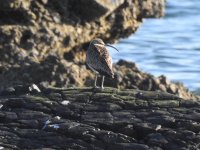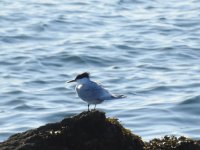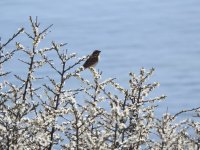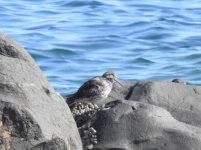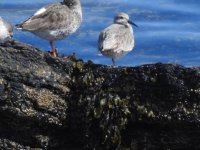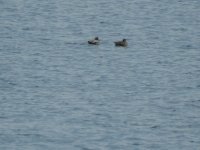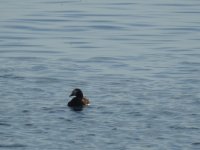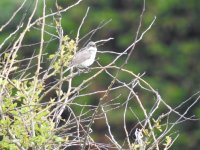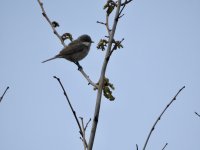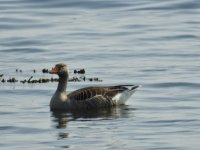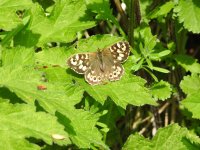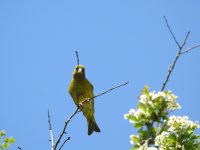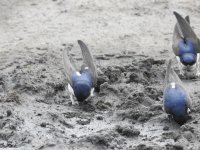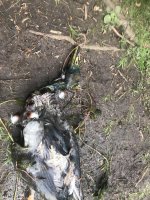My slow motion Spring continued to slowly unroll this morning during another walk along the Seafield strip.
Approaching the large sandy bar between the harbour and the tower, I spotted a few birds working the waters edge. Two were Oystercatchers, and the third I thought initially to be a Curlew. Something looked off with the Curlew though, even at distance it looked small. I drew closer in parallel, but the bird lifted before I could get a good look. I picked it up in the air with the binoculars, noting a shortish looking beak, and tracked its flight north to rocks at the harbour where it landed. I was sure it was a Whimbrel at this point, but retraced my steps towards the harbour to get a record shot or two, that have confirmed Whimbrel as the correct ID.
Willow Warblers have now arrived in force, which are my first of the year for this area. Another first was found on the rocks off the tower, with my first Sandwich Terns of the year being spotted.
Approaching the large sandy bar between the harbour and the tower, I spotted a few birds working the waters edge. Two were Oystercatchers, and the third I thought initially to be a Curlew. Something looked off with the Curlew though, even at distance it looked small. I drew closer in parallel, but the bird lifted before I could get a good look. I picked it up in the air with the binoculars, noting a shortish looking beak, and tracked its flight north to rocks at the harbour where it landed. I was sure it was a Whimbrel at this point, but retraced my steps towards the harbour to get a record shot or two, that have confirmed Whimbrel as the correct ID.
Willow Warblers have now arrived in force, which are my first of the year for this area. Another first was found on the rocks off the tower, with my first Sandwich Terns of the year being spotted.




